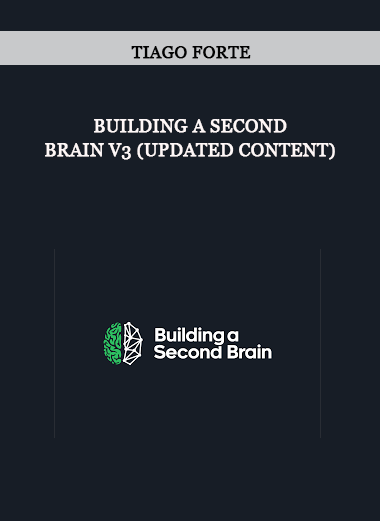Courses Infomation
NICABM – The Experts Biggest Mistakes
NICABM – The Experts Biggest Mistakes
**More information:
Description
How to Work With Clients Who Are Stuck
How the Unconscious Brain Creates a Holding Pattern of Fear
Bessel van der Kolk, MD Joan Borysenko, PhD Bill O’Hanlon, LMFT
- How chronic trauma changes the brain (and why it keeps patients stuck)
- How specific neural changes alter the way clients build connections
- How one practitioner shifted himself from fearful avoidance to spontaneity
How to Train the Rigid Mind
Rick Hanson, PhD Kelly McGonigal, PhD
Joan Borysenko, PhD Bill O’Hanlon, LMFT
- The “mo-betta” approach to positive neural linking
- How to increase a client’s learning rate from positive experiences.
- How the “dreaded experience” can make your client stuck
- How to pick out the subtle ways your client is stifling self-expression
One Practical Skill to Locate Where Your Client is Stuck
Marsha Linehan, PhD Joan Borysenko, PhD
- What happens when practitioners mistake impulse for choice
- The analytical technique that motivates a client to change
- How to focus an assessment to help clients identify their own stuckness
How to Work With Procedural Memories Keeping Your Clients Stuck
Pat Ogden, PhD Joan Borysenko, PhD
- How to access specific memories in the body that cognitive therapy can’t reach
- The procedural patterns of trauma vs. attachment: why they require two different approaches
- How to foster integration between the explicit and implicit selves
How to Help Clients Defuse Limiting Ego Strategies
Tara Brach, PhD Ron Siegel, PsyD Kelly McGonigal, PhD
- The “Spacesuit Self”: why clients put it on (and why it’s so hard to take off)
- How to approach stuckness when it’s layered with shame
- The “stop signal” that can disrupt anger and invite choice
How to Sell Your Client on Change
Marsha Linehan, PhD Ron Siegel, PsyD Kelly McGonigal, PhD
Joan Borysenko, PhD Bill O’Hanlon, LMFT
- The one critical part of therapy where many practitioners fall short
- The one emotion that you need to reframe as your client’s worst enemy
- One practical skill that can break clients out of negative patterns
How Post-Traumatic Memories Can Hold the Body Hostage
Peter Levine, PhD Ron Siegel, PsyD Bill O’Hanlon, LMFT
- How the body’s unconscious reaction to trauma keeps clients stuck
- Why trauma survivors often get stuck in a brain-body feedback loop
- The key factor that helps the body release stuck trauma and restore itself
How to Work With the Behavioral Patterns That Suppress Growth
Richard Schwartz, PhD Ron Siegel, PsyD Kelly McGonigal, Phd
- The Internal Family Systems model for helping clients get unstuck
- How to help clients form corrective relationships with their extreme sub-personalities
- The important negotiation process that allows you to reach a client’s stuck parts
How to Use Neuroplasticity to Overwrite Negative Beliefs
Rick Hanson, PhD Bill O’Hanlon, LMFT
- 12 seconds that can make a difference for positive brain change
- Why positive experiences alone are insufficient (unless you follow them up with this one step)
- The important phase of brain change that practitioners routinely overlook
How to Motivate Clients to Push Through Self-Imposed Boundaries
Kelly McGonigal, PhD Ron Siegel, PsyD Bill O’Hanlon, LMFT
- The cocoon effect and how it keeps clients stuck
- How to use the “missing zero” strategy to motivate change
- How to help clients assess the real cost of avoidance
Why Your Client May be Feeling Constrained and How to Help Free Them
Jack Kornfield, PhD Ron Siegel, PsyD
Kelly McGonigal, PhD Joan Borysenko, PhD
- How to adjust an intervention when arousal overwhelms the client
- A strategy to help clients make more empowering decisions
- How to help clients regain a new sense of self after trauma
How to Help Clients Rewrite Their “Stuck Story”
Joan Borysenko, PhD Bill O’Hanlon, LMFT
- One of the most powerful patterns that keeps people from change
- The 10,000-hour plan to becoming stuck
- One way to help clients escape the prison of their grievance stories
What is HYPNOSIS – NLP?
Neuro-linguistic programming (NLP) is a technique used to provide clients with the tools to overcome certain life obstacles. NLP is in short, a way of helping people help themselves to reach a state of excellence, happiness and peace of mind.
NLP is a learning model devised by two American academics (Dr Richard Bandler and John Grinder) in the early 70s, who were fascinated by the relationship between language behaviour and excellence. They believed that by analysing the unconscious linguistic techniques used by successful people, they could produce ‘a recipe for excellence’ in which other people could consciously learn to apply said ‘successful techniques’.
What is NLP?
NLP stands for neuro-linguistic programming.
Neuro – All of our experience is gained from the neurological processes that govern our five senses: taste, touch, smell, sight and sound.
Linguistic – We make sense of these experiences through a set of filters, including language. The language we use can also affect the way we experience things.
Programming – This is a way of controlling the outcome of something. A person can use NLP to ‘predetermine excellence’ by adjusting the language we use.
To break it down, the science aspect is the process of extracting and learning the techniques. The art aspect is the act of applying the techniques to our own lives.
There are four ways NLP techniques are most commonly used:
to teach effective communication
to ensure continual personal development
to enhance learning
to encourage a greater enjoyment in life
NLP is used to teach us how changing our perception of the world can lead us to adjust and adapt our behaviours to live the life we want.
NLP and hypnotherapy
Hypnotherapists aim to induce a relaxed and receptive state (trance) in their clients in order to access the subconscious. Many of the obstacles that prohibit or limit a person’s experiences are deeply embedded in the subconscious, so by accessing the thought processes that usually remain hidden, hypnotherapists can work with clients to change the restrictive thought pattern and make room for positive development.
An NLP practitioner will look at your attitude, your language and how you use it, your understanding of relationships and your ability to build rapport, as well as the physical and emotional states that are best for accomplishing a task. Effective communication and perception of others and ourselves, will also be key focuses. All of these will be analysed and examined by the professional, so that a strategy for improving understanding, motivation, learning and memory can be formed.
Many hypnotherapists train in NLP to help improve their ability to communicate more effectively with their clients, as well as to help their clients communicate more effectively with themselves.
Salepage : NICABM – The Experts Biggest Mistakes
More From Categories : HYPNOSIS – NLP
Curriculum:
195:” “;}}
“;}}














![Peter Titus - Create Your Own Automated Stock Trading Robot In EXCEL! [39 Video (MP4) + 2 Document (HTML)]](https://crablib.info/wp-content/uploads/2021/02/Peter-Titus-Create-Your-Own-Automated-Stock-Trading-Robot-In-EXCEL-39-Video-MP4-2-Document-HTML.jpg)




















Reviews
There are no reviews yet.